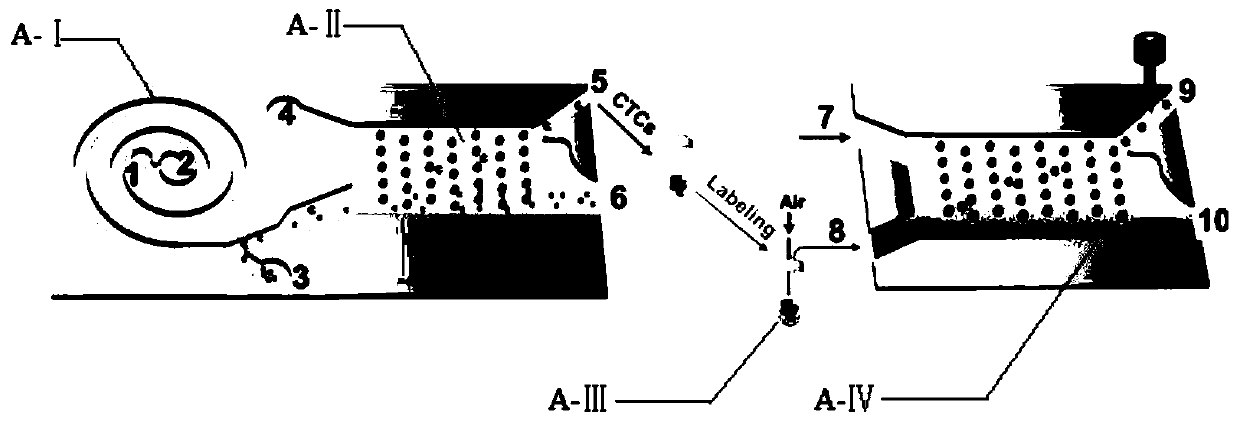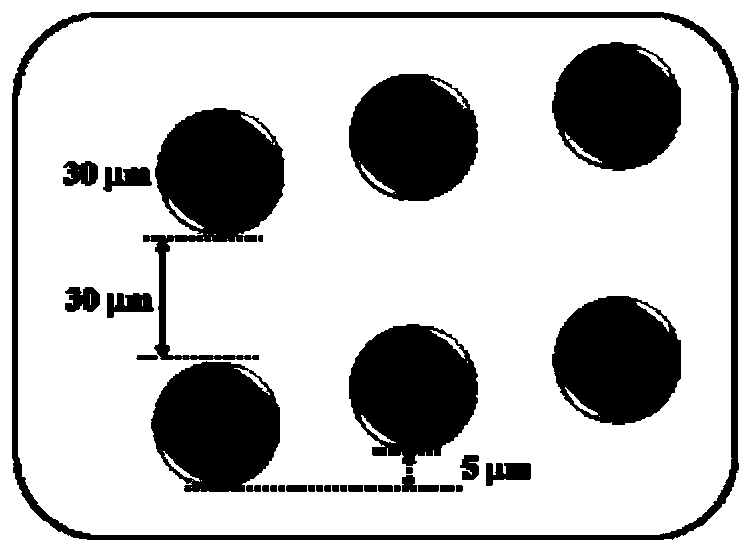Micro fluidic device for CTC high-flux unicell phenotype analysis
A single-cell, microfluidic chip technology, used in measurement devices, material analysis by optical means, material analysis, etc., can solve the problems of rapid and continuous sampling of single cells, slow application development, etc. effect of change
- Summary
- Abstract
- Description
- Claims
- Application Information
AI Technical Summary
Problems solved by technology
Method used
Image
Examples
Embodiment 1
[0067] Such as figure 1 As shown, the integrated microfluidic device of the present disclosure was used to perform single-cell phenotype analysis on colorectal cancer patients with different clinical stages. First, take 5 mL of fresh anticoagulated blood, and after being treated with erythrocyte lysate, the red supernatant is discarded by centrifugation, and the white precipitate at the bottom is redispersed in 5 mL of PBS. Liquid PBS is passed into the second inlet at 750uL / min. At the outlet of the spiral chip unit, the inner third outlet is connected to the fourth inlet of the microcolumn chip unit through a catheter. The outer outlet is the waste liquid outlet. min leads to the fifth inlet of the micro-column chip unit, and the tumor cells can further concentrate the liquid through the lateral deviation of the micro-column to improve the purity of the tumor cells. The sixth outlet of the microcolumn chip is the waste liquid outlet, and the seventh outlet is the collection...
Embodiment 2
[0069] The established integrated chip device was used to count and phenotype CTCs in blood samples. As controls, blood collected from nine healthy donors was also analyzed in the same way. Judging from the test results ( Figure 7 a), The number of CTCs in patient blood samples is closely related to tumor stage. The average number of CTCs in patients with clinical stage 2 to 4 tumors was 55, 125 and 199, respectively, while the number of CTCs detected in the control group was less than 20. In addition, the present disclosure found that with the aggravation of the degree of tumor, the expression of EpCAM in CTCs decreased and the expression of N-cad increased ( Figure 7 b, c), illustrating that more CTCs are in the mesenchymal phenotype with higher metastatic ability and invasive ability, which means stronger tumor metastatic ability. The expression of two proteins in CTCs of patients with different stages Figure 7 There are obvious differences in location distribution i...
PUM
| Property | Measurement | Unit |
|---|---|---|
| diameter | aaaaa | aaaaa |
| diameter | aaaaa | aaaaa |
| critical dimension | aaaaa | aaaaa |
Abstract
Description
Claims
Application Information
 Login to View More
Login to View More - R&D
- Intellectual Property
- Life Sciences
- Materials
- Tech Scout
- Unparalleled Data Quality
- Higher Quality Content
- 60% Fewer Hallucinations
Browse by: Latest US Patents, China's latest patents, Technical Efficacy Thesaurus, Application Domain, Technology Topic, Popular Technical Reports.
© 2025 PatSnap. All rights reserved.Legal|Privacy policy|Modern Slavery Act Transparency Statement|Sitemap|About US| Contact US: help@patsnap.com



